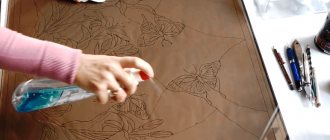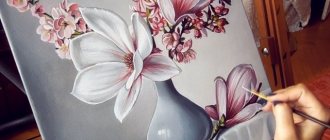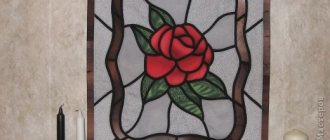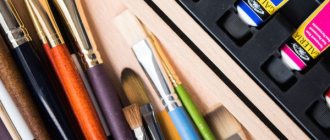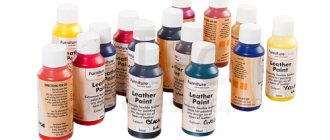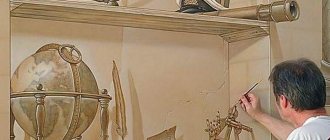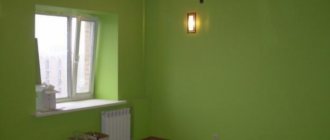How to make paint from pva glue?
PVA glue paints
- take 20 g of high-quality gouache;
- add the same amount of PVA glue;
- mix the mass thoroughly until no white streaks remain in it;
- if you want to make paint of a light shade, add PVA in a volume of 40 g - this will only strengthen the finished coating.
Interesting materials:
How to display an image from a phone to a TV via a set-top box? How to display an image from a phone to a TV set-top box? How to display buttons on the phone screen? How to wake up your phone from sleep mode? How to remove water from a phone speaker? How to display the Facebook icon on the phone screen? How to open the keyboard on your phone? How to block an account on your phone? How to lock an Android phone? How to lock the screen on this phone?
Is the circuit required or not?
Typically, classic painted stained glass or glass paintings have outlines. If your goal is beautiful, smooth murals, use raised paint or stained glass lead tape.
Remember: all contour lines must be closed. If there is a break somewhere in the outline, the colors will flow, mix, and this can ruin your work.
Most often they use a black outline or a tin color that imitates metal.
Unless, of course, this is a contourless technique, where the contour is not used to contain stained glass paint, but rather is of a decorative nature. In another article, you can read all about the most popular stained glass painting techniques
And of course, each manufacturer has its own contour paints in tubes of different colors. I especially like the ones that imitate silver or gold.
The golden outline looks great in subject paintings on glass
Be sure to let the relief outline dry for about 20 minutes before you start painting with stained glass paints! Take this into account! When working with stained glass paints, the sequence of actions one after another is important.
Useful little things
- If the stained glass window is placed in a metal frame, it is better to paint it the color of the contour paste. A good solution suitable for a lead-colored outline is cold galvanizing. For example, Zinga conductive paint, which is a dispersion of zinc powder in an organic solvent, will once dry make the frame not only lead-gray, but also resistant to corrosion.
- Since we're talking about unusual coatings, let's mention one more of them - fireproof. Fire-retardant paints for metal - Polistil, Krauz and their numerous analogues - when heated to a critical temperature, they foam and reliably insulate the base. The carbon foam obtained by expanding the protective coating can withstand flames for at least 45 minutes. (See also the article Painted facades for the kitchen: features.)
Polistil paint will protect metal structures from dangerous overheating in the event of a fire.
Precautionary measures
When working with stained glass paints, certain safety rules must be followed. You must always remember that paints are flammable. There should be no open source of fire where you work. All paints and varnishes emit toxic fumes when they evaporate, so try not to inhale them. Protect your skin from getting paint, use gloves and clothing to cover certain areas of your body. Do not taste paints under any circumstances, because many of them contain substances that cause severe poisoning. Don't let your children play with paints.
Stained glass art allows you to turn an inconspicuous glass product into a unique piece. Any person can make drawings on glass with paints, the main thing is to use your imagination and listen to it.
Idea Vetro by Maimeri
Maymeri is another flagship of the market, one of the most popular Italian paints. They are liquid, like Pebeo, take a little longer to dry (about 40-50 minutes before touching with a finger), but overall they are very easy to use and show outstanding performance once dry.
Their color range is a little narrower than that of Lefranc and Pebeo, but for most tasks it is quite sufficient. The palette consists of 13 color shades and 12 metallic colors.
Idea Vetro stained glass varnish paints from Maimeri
Why shouldn't you touch the surface of varnish-based paint?
If you have made your choice in favor of stained glass varnish paints , you need to remember one rule as an axiom: solvent-based stained glass paints take a long time to dry!
Any touch in the first 30-40 minutes will leave a fingerprint. Complete drying occurs after 8 hours or more (the manufacturer indicates the exact time on the jar). It is not recommended to force stained glass paints to dry, as this will cause them to lose their shine.
Also, keep your work to dry completely in a place where dust will not get in... otherwise you will end up with a “dusty decor” on the surface of the glass
